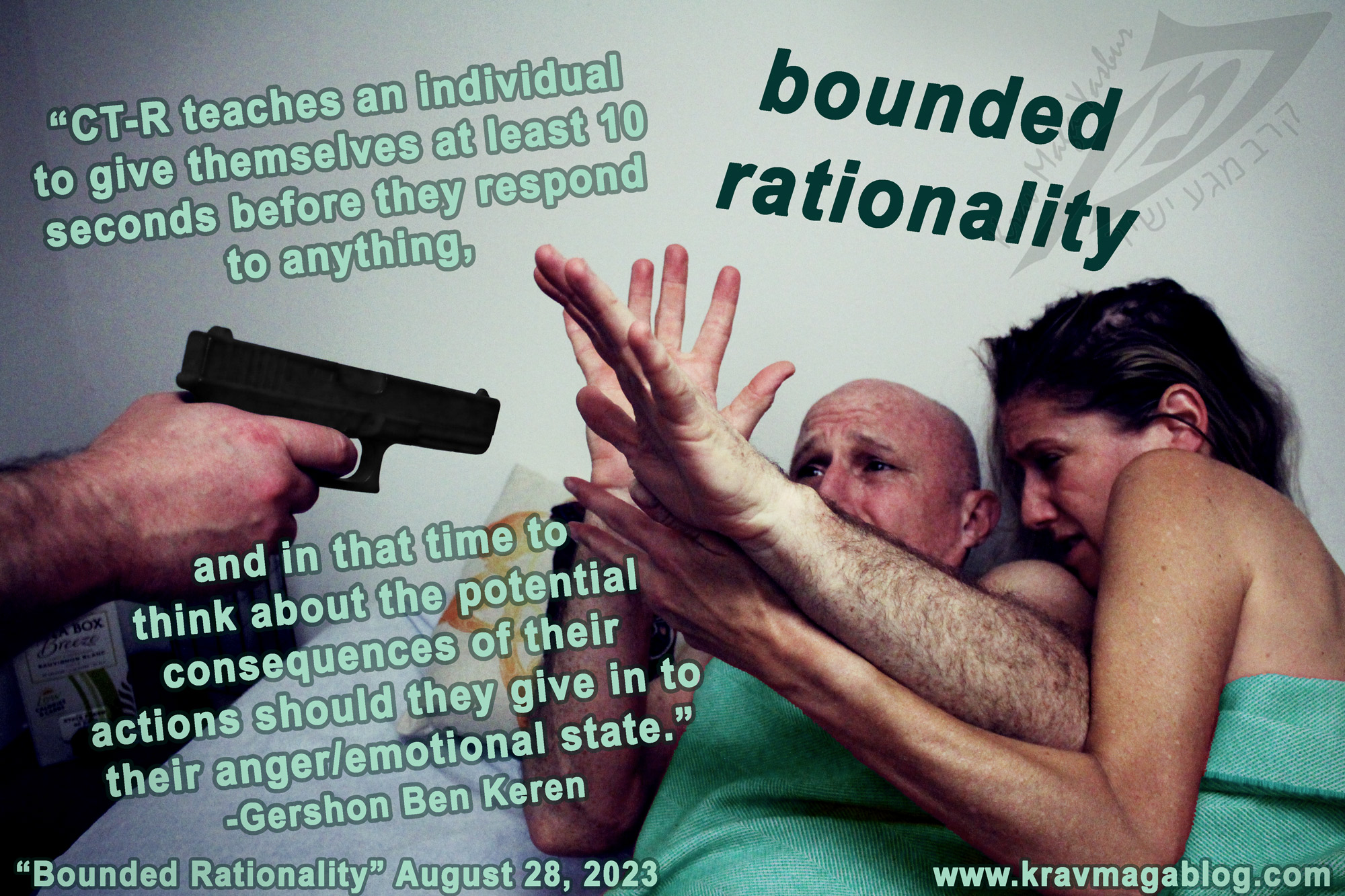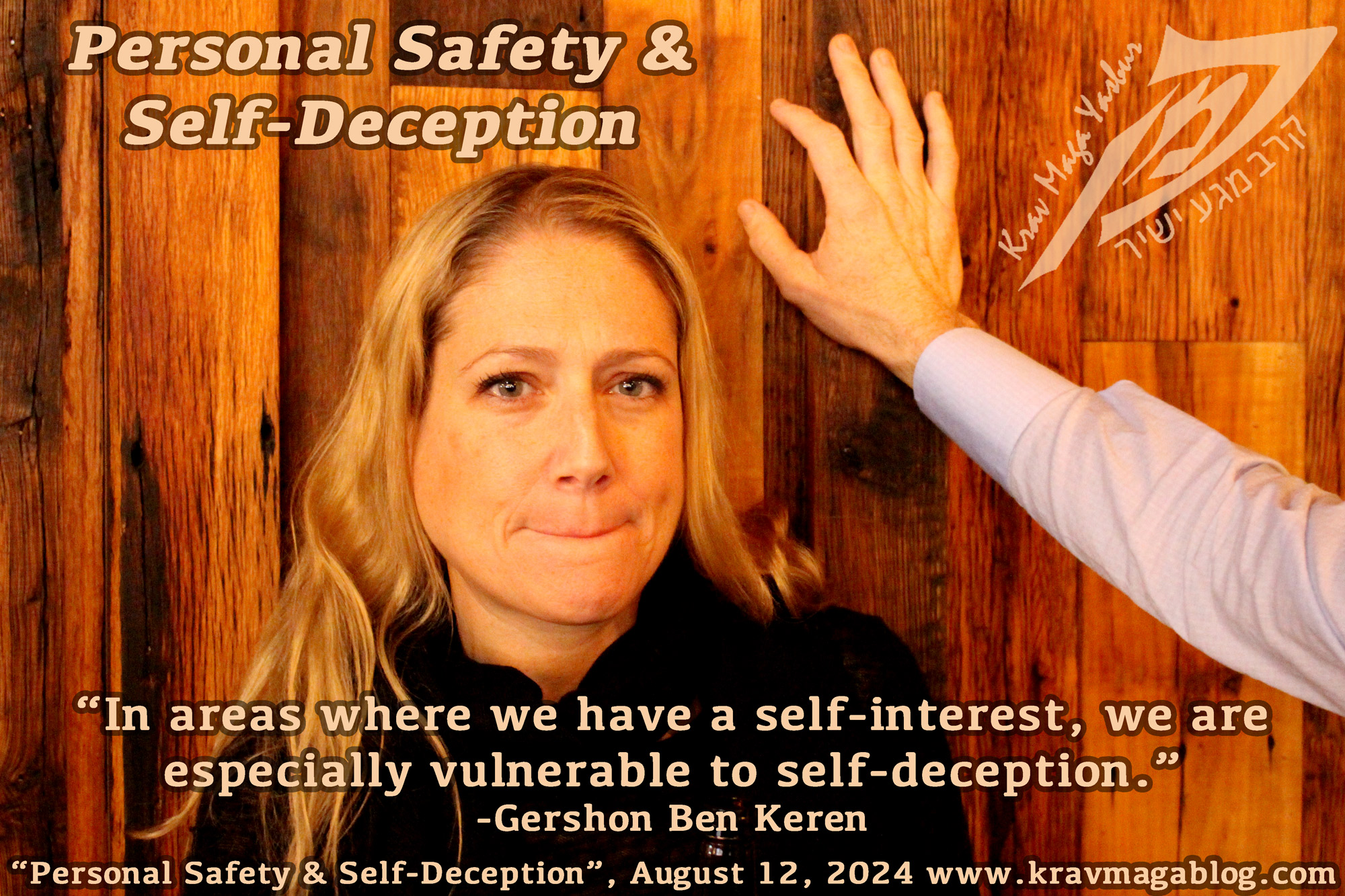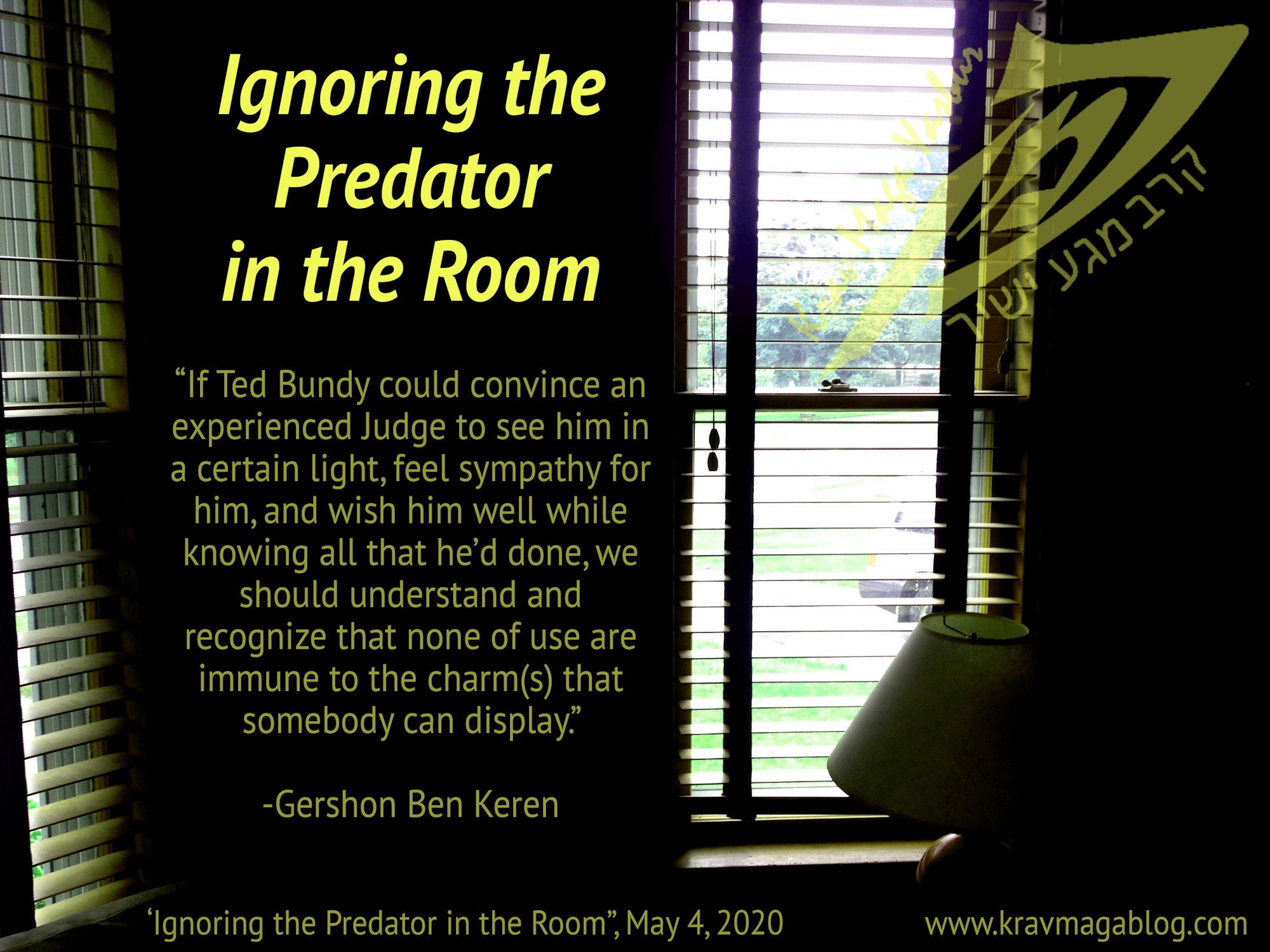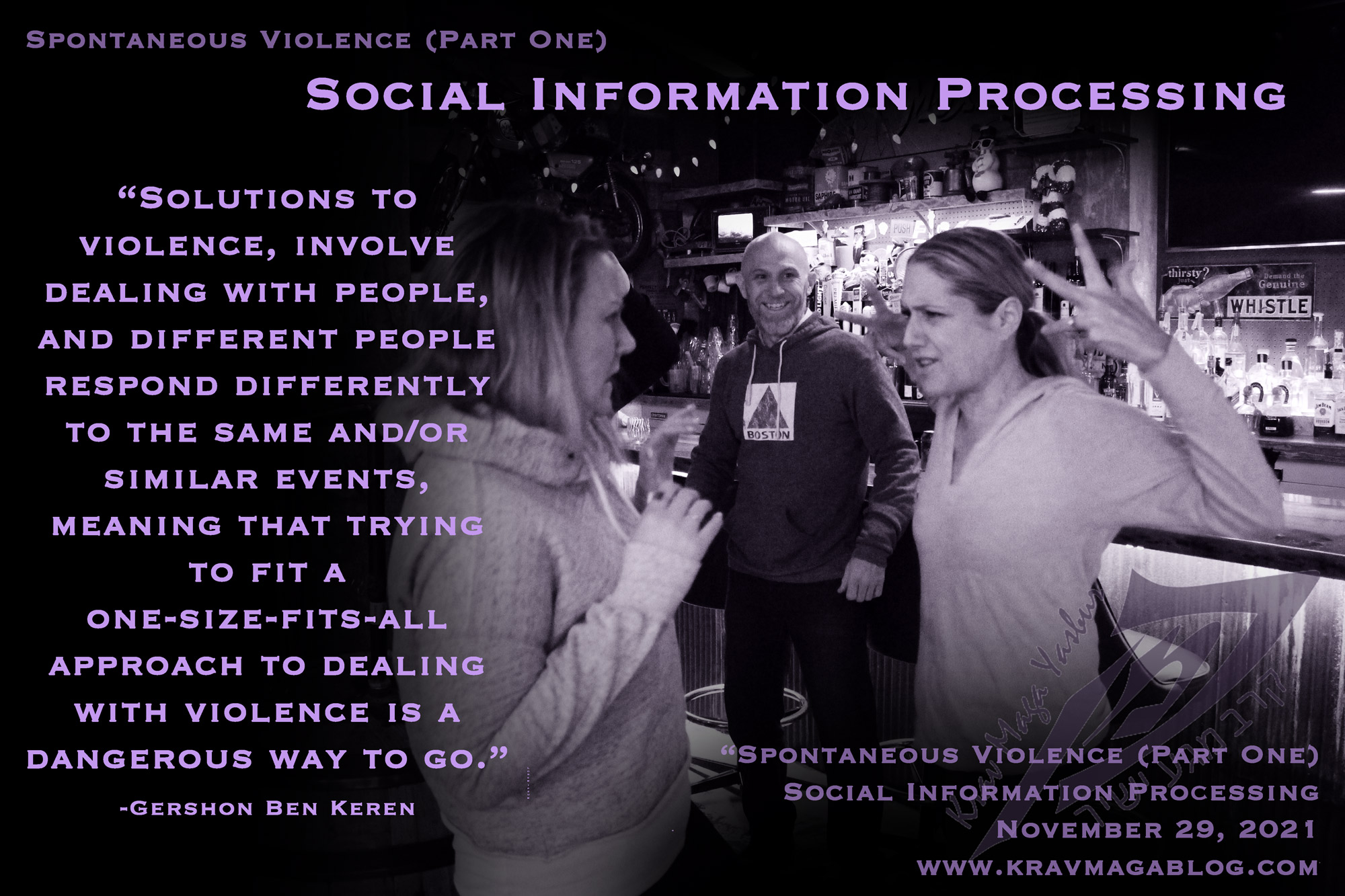Social Information Processing, is an article written by Gershon Ben Keren, a 5th Degree Black Belt in Krav Maga, who teaches Krav Maga in Boston, MA. He has also authored three Amazon best-Selling Books on Krav Maga.
In this article I want to look at the cognitive processes that are at play in incidents of spontaneous aggression and violence. This includes how social information is processed using scripts and schemas etc. Spontaneous acts of aggression/violence occur when a cue or trigger in the environment causes somebody to become aggressive; this is also sometimes referred to as reactive or affective aggression etc. The cue/trigger can be something somebody says or does, or even a look that is interpreted as a challenge or a slight etc. Spontaneous violence is different to planned or premeditated violence (sometimes referred to as proactive or instrumental violence e.g., violence used to accomplish a goal such as obtaining a wallet in a street robbery, through the use of threats and intimidation etc.), in a number of ways:
- There are usually no defined goals e.g., the aggressor doesn’t have a clear idea of what they are trying to obtain (unlike a mugger).
- The aggression is triggered by external stimuli – such as being bumped into – as opposed to internal urges/desires (the mugger’s need to obtain money)
- The aggression/violence is largely the result of situational events, as opposed to being characterologically driven; this is not to say that a person in a spontaneous incident doesn’t have a predisposition to use aggression and violence.
- In premeditated acts of aggression and violence the confrontation is largely impersonal i.e., the offender committing a street robbery has no personal vendetta against the person they are mugging, whereas in Spontaneous acts of violence the incident is highly personal to the aggressor.
Despite these characteristics of spontaneous incidents, making it appear that all such events can be neatly categorized, and responded to in the same way, this is not the case. Solutions to violence, involve dealing with people, and different people respond differently to the same and/or similar events, meaning that trying to fit a one-size-fits-all approach to dealing with violence is a dangerous way to go. Hopefully by understanding how threats, slights, perceived challenges are processed we can better understand where and when solutions such as de-escalation and conflict resolution may apply. To read another blog that looks at similar issues from a different perspective please click here.
A social interaction – that can be classed as a conflict, such as stepping on someone’s foot, bumping into them, jumping a line/queue etc. – is a problem that needs to be solved; it is possible to solve the problem by ignoring it e.g., letting the person who jumped ahead of you in the line/queue go first, because the potential confrontation is not worth your time etc. However, if we consider what could be seen as a more personal affront to somebody - when you accidentally bump into them in a bar spilling a drink all over them, for example, it becomes more complicated. In such a scenario, the individual who has had this “injustice” committed against them, needs to find a way to solve the combined problems, of their social embarrassment, their social standing, and their need to have the wrong righted in some way. To do this they will start to make a social evaluation of the system, which will end with a decision on how to respond. This will involve the running of certain scripts and the use of a variety of schema. All of this takes place in memory, with some parts being consciously driven, and other parts happening at the subconscious level. Human memory can be thought of as a large number of nodes (created by experience), being associated with other similar nodes along a variety of pathways. An external stimulus, such as having a drink spilt over them, will cause a node to be “lit up” and it will start to “light up” other nodes that it is connected with based on the strength of the connections etc. It could be that memories associated with challenges to social status become primed, or it could be memories associated with accidents in social settings, and it is these memories and their various relative strengths, which will be used to interpret what is happening and start the process of how to respond. These knowledge structures are held in associative memory along with a variety of scripts and schema.
Because we often need to respond quickly to things, we create scripts that allow us to do so e.g., we might have a “personal retribution” script that we use to regain social status etc. When we experience a loss of social status, and the various memory nodes are primed, the script becomes associated with them, and we have a response that is ready to go. However, the process doesn’t stop here. We also run the script against other scripts to evaluate how effective and appropriate it might be e.g., somebody might have a set of values that says it is inappropriate to hit women, or a script that says they will physically lose to somebody who is bigger and stronger them. So, the initial response gets filtered by other scripts that inhibit certain behaviors and outcomes. It is the lack of these inhibitory scripts that often result in people becoming aggressive and/or violent e.g., if somebody has found that using violence is a successful strategy for them, then it is likely that they won’t have strong inhibitory scripts associated with their memories of violence etc. In many ways we all share similar evaluations of situations to greater or lesser degrees e.g., everyone will be angry to some degree at having a drink spilt over them, but some people will evaluate the situation more as an accident than a challenge and may have stronger inhibitory scripts that prevent and discourage them from becoming aggressive – especially if doing so in the past has largely been unsuccessful for them.
Obviously, this is a very simplified view of the thought processes that individuals use when considering violence, and it is worth remembering – however emotional – it is still a conscious decision that is made, however impulsive and emotionally driven it may seem. In next week’s article I will look at how emotions, misattributions of emotions and violence, influence this decision making process.
0 COMMENTS
















